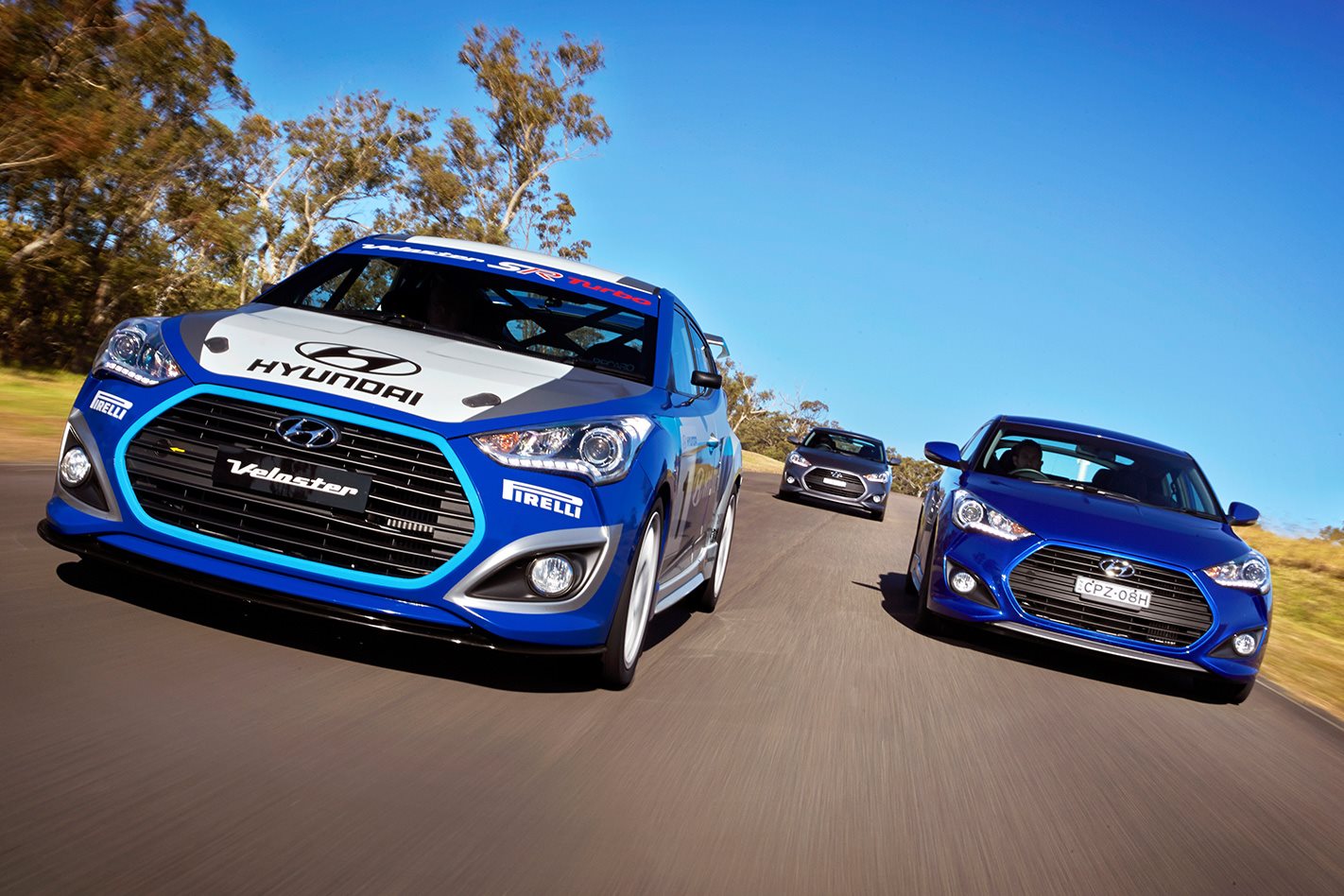We’re a special bunch, us Aussies.
We have our own currency, our own curious brand of football, our own unique touring car series and a climate and terrain that’s very difficult to replicate anywhere else in the world. It’s this last point that means we often require a special sort of vehicle, too.
While buyers are increasingly turning to global models, our unique environment means they usually need modification before being deemed fit to cope. It’s partly why Ford and Holden’s proving ground operations will remain active after local manufacturing ceases, and it also explains why a number of car makers have Australian engineering divisions, to cater for our market’s somewhat fickle tastes.
Hyundai is one of that number, and Product Planning Manager, Andrew Tuitahi, explains why the Korean maker goes to the time and expense of optimising its vehicles for what is, in global terms, a small market: “Australia features a unique combination of road types, surfaces, customer expectations and vehicle preferences, so our local tuning program aims to cover the widest possible variety of road conditions and driving disciplines.
We believe that delivering ride and handling levels that can compete with the dynamic leaders will take us a step closer to realising our goal of becoming ‘the most loved car company’.”
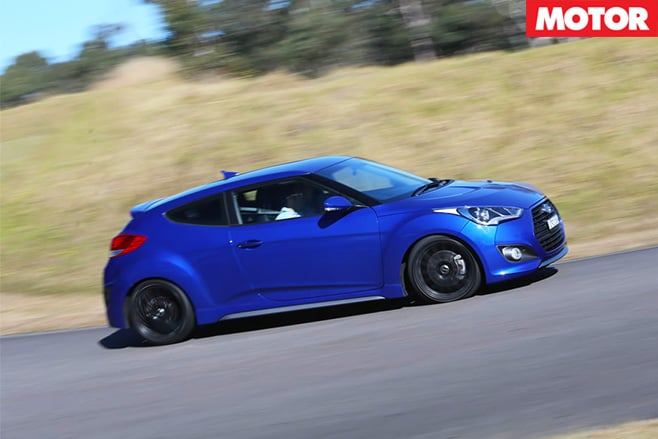
Hyundai has dipped its toes in the performance waters before, but now appears ready to plunge in headfirst. It’s spending big on its World Rally program, which has already paid dividends with a 1-2 result at Rally Germany, and has announced a standalone performance brand, the quirkily named ‘N’.
The first N product is expected to be based on the new-generation i20, due to be premiered at the Paris Motor Show just as this issue goes on sale, which means we’re unlikely to be driving a true performance Hyundai for a while yet.
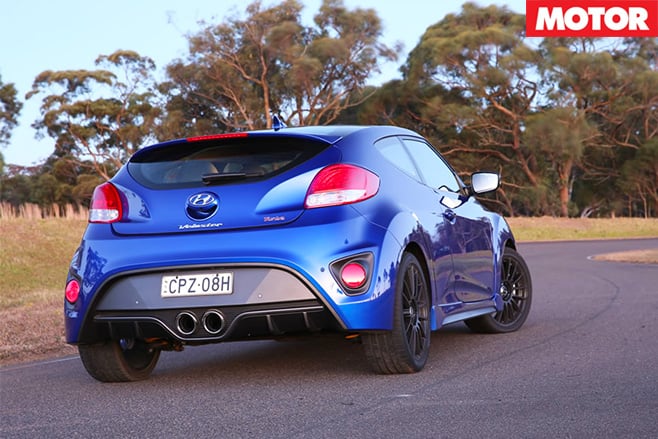
The project was the brainchild of Tuitahi and Senior Manager of Product Engineering, Hee Loong Wong, who were keen to discover how far the Veloster chassis could be tweaked, with suspension tuning led by French-based guru David Potter.
First port of call was replacing the car’s standard suspension with high performance dampers, developed specifically for the project by Korean firm Mando, and progressive-rate King Springs. Pirelli P Zero tyres, wrapped around 18-inch Rays alloy wheels, replace the standard Hankooks, and Winmax performance brake pads and braided brake lines aim to improve stopping power.
The drivetrain remains standard, but ECU tweaks and a cat-back exhaust lift power to an estimated 190kW and 320Nm, while a Quaife limited-slip diff helps put the power to the ground.
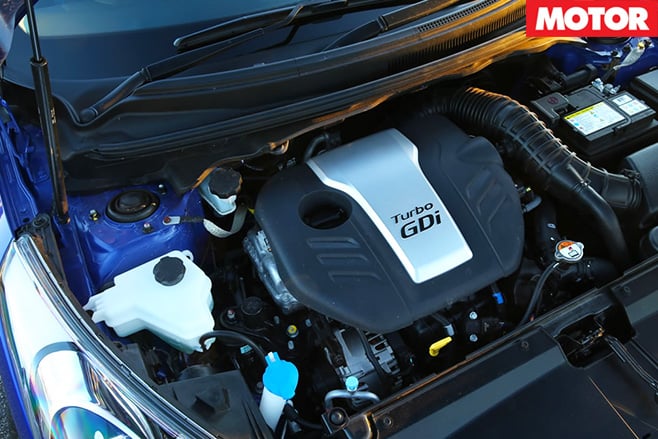
Reasonable grip levels and strong mid-range torque make it reasonably quick, but engineered-in understeer and sub-standard rubber mean its on-limit behaviour is defined by the degree of front-end push. Traction is also limited, the inside front wheel spinning up exiting second- and third-gear corners.
Behind the wheel of the ‘Raptor’, improvements are apparent the instant the steering deviates from centre. The steering itself carries slightly more weight, but there is greater connection through the wheel, and stronger grip from the upgraded tyres.
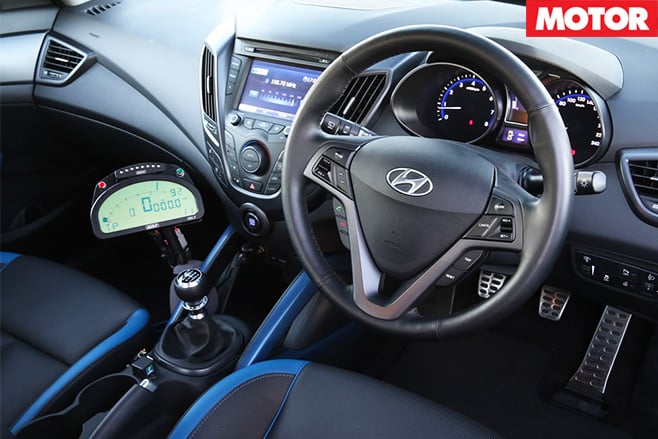
While it still rewards smoothness, the car’s line can be adjusted using throttle and brakes and the limited-slip diff increases traction markedly, though some of the credit must also go to the tyres.
It’s not razor-sharp in the manner of a Renault Sport Megane RS 265 or darty in its responses like a Ford Focus ST, though its softer set-up is partly down to the philosophy of David Potter, who says: “I have a simple philosophy that cars can be sporty without being harsh! Mando gave us [dampers] that were very responsive to tuning and I was happy to let the suspension be compliant to allow weight transfer.”
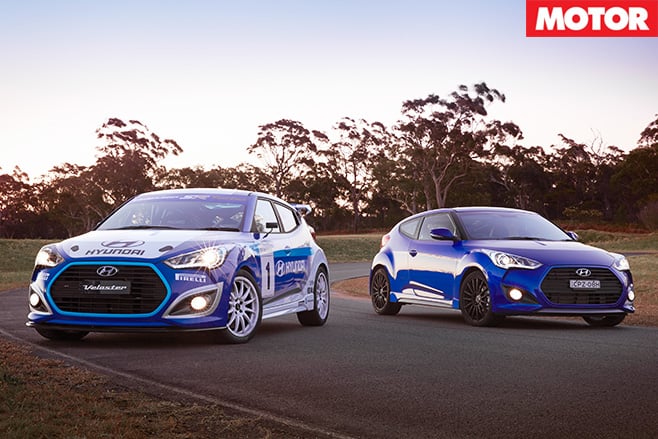
The key question, though, is how much the Raptor would cost if it were offered to the public?
All the ability in the world would be useless if it retailed for $60,000 and the list of modifications is fairly extensive. Hyundai’s PR team is extremely keen to stress that the car is “purely experimental” and that production would be a long way off, primarily because every upgrade would have to be subjected to Hyundai’s rigorous durability tests.
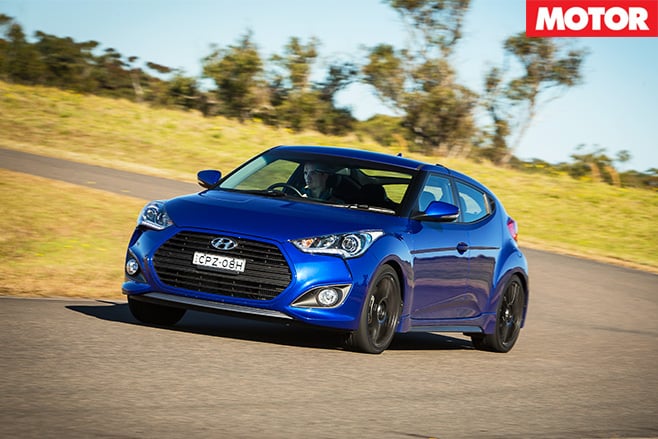
At that price it would undercut the Megane RS and Golf GTI by a few thousand dollars and based on first impressions, while it may not better them, the VelosterRaptor certainly has the ability to be viewed as an intriguing alternative.
We hope Hyundai Australia pushes ahead with the product, as it’s too good to remain a concept driven by a select few. It’s also evidence that we’ve not yet seen the best of the Korean product. On which point, I’ll leave the final word to David Potter: “There are no fundamental reasons why future Hyundai products can’t have similar characteristics.”
Velosterraptor Turbo
3.5 out of 5 stars
Engine: 1.6-litre inline-4, DOHC, 16v, turbo Power/Torque: 190kW/320Nm Transmission: six-speed manual Mods: Mando dampers, progressive rate King Springs, Pirelly P-Zero tyres, Quaife LSD, Winmax brake pads, braided brake lines, ECU tune, cat-exhaust system, SuperPro bushes Price: $40,000 (est.)
UNREAL RACER
Veloster Race Concept
Around 18 months ago, MOTOR ran a story about an exciting project from Hyundai, a race-prepped Veloster Turbo ready to tear up tarmac all over Australia. There was plenty of enthusiasm from those involved, but sadly the project then seemed to sink without a trace. Happily, it’s now back and we’ve driven it.
Similar in spec to the modded road car, the race car unsurprisingly takes things a step further, with a more aggressive one-way clutch-type Cusco diff replacing the road car’s Quaife unit, DMS four-way adjustable suspension, massive Alcon brakes (355mm rotors/four-pot front calipers; 300mm/two-pot rears) and Pirelli P Zero Trofeo semi slicks.
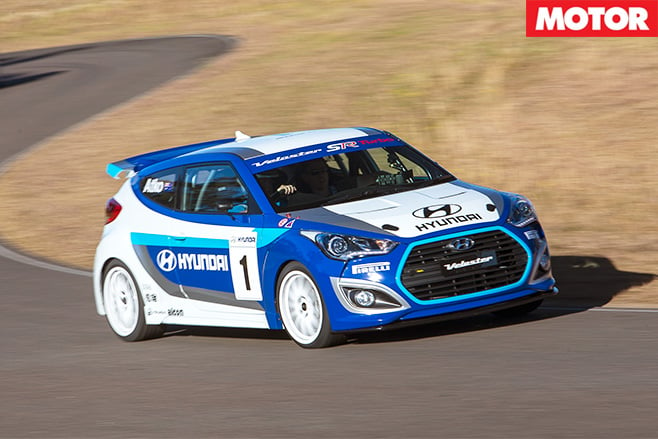
While still fairly standard, the car’s racer attributes take some getting used to. The sticky tyres need warming up – though provide superb grip once they are – the non-assisted brakes require a firm shove (but again, offer beautiful feel once you adjust) and the diff take-up is much more aggressive than the road car.
Over the course of the day we stiffen the rear anti-roll bar to help turn-in and increase front-end damping to improve steering response. While the car feels better and better to drive, Atkinson straps in and feels too much front grip is now being sacrificed.
Sadly, lower control arms fouling on the front rotors stop play early – such is testing. Fingers crossed the Veloster Race Concept manages to make its competition debut sometime in 2015.


